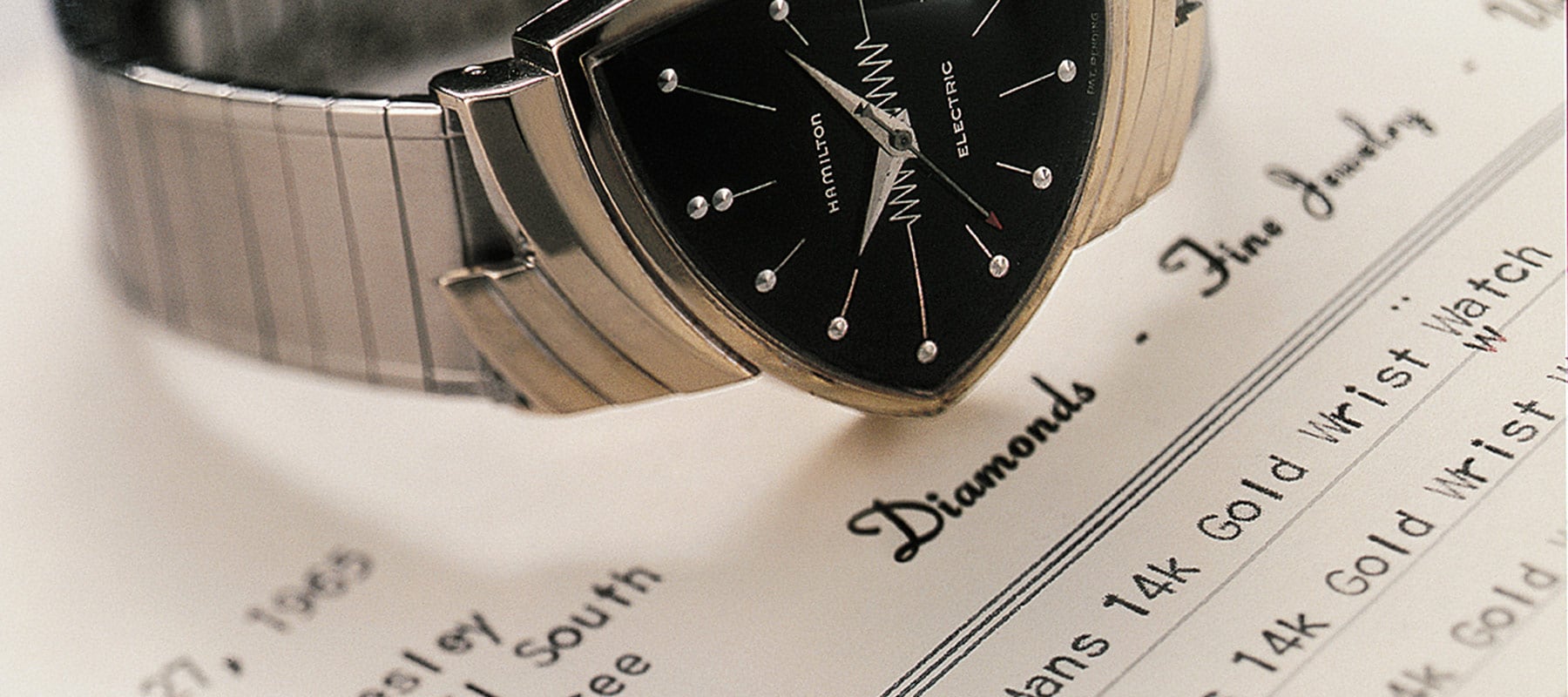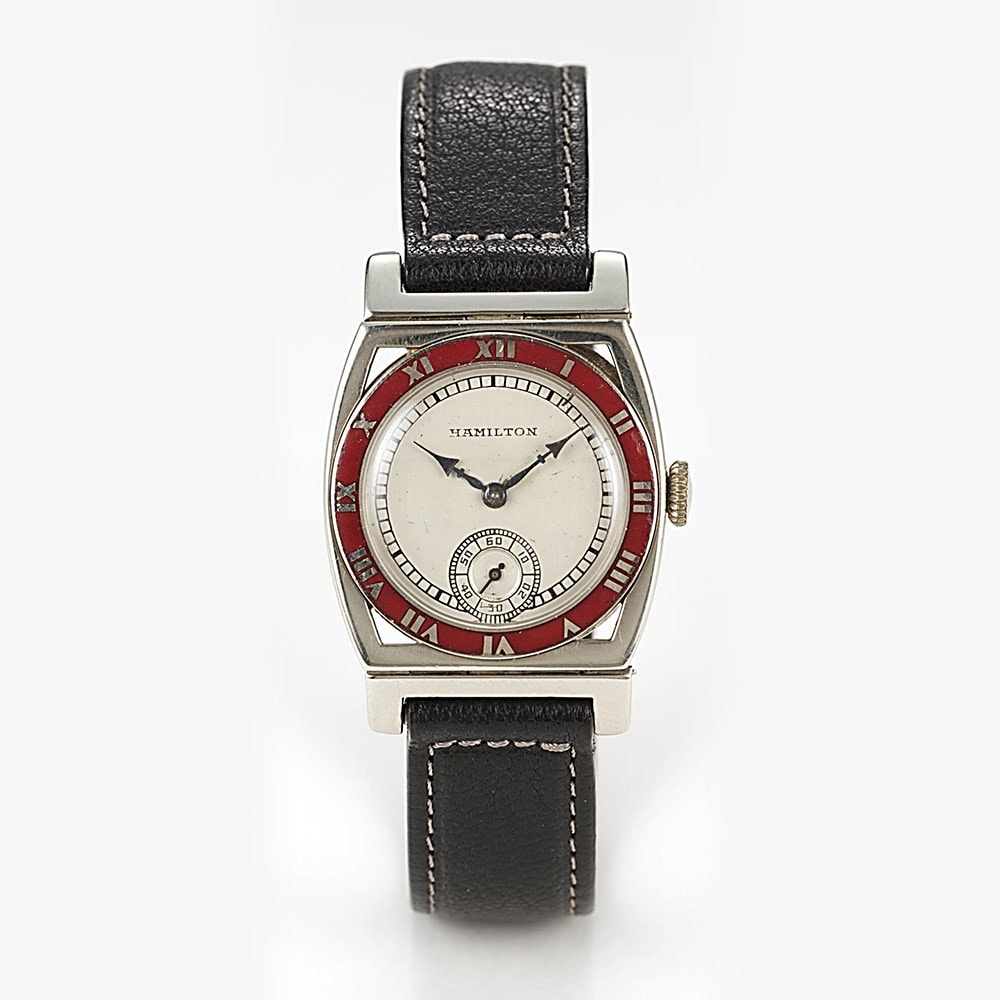

Taking a different approach
Having built a reputation for accuracy and reliability very early on, the Hamilton designers started to think outside the box. From unusual names to improbable designs, specially adapted movements to unique features, Hamilton’s history is full of watches that have gained legendary status among collectors, fans and experts alike. This is the story of just some of the iconic watches that stand out in Hamilton’s long and rich history.
As early as the 1920s, the Hamilton designers began experimenting with different shaped watches. Evolving from simple circular and square designs, they tested out rectangular and tonneau shapes that appealed to customers looking for something out of the ordinary. This marked the start of a different approach to watchmaking that has since made Hamilton the go-to for unusual and interesting timepieces.
"As early as the 1920s, the Hamilton designers began experimenting with different shaped watches."
1928 welcomed the intriguingly named Piping Rock. A black enamel bezel with hour markers was set in the frame of a tonneau-shaped gold case. This unusual watch was chosen as the perfect way to mark the World Series win of the New York Yankees baseball team in 1928. Specially engraved editions were presented to the team’s legendary players who included Lou Gehrig and Babe Ruth, thus cementing the Piping Rock’s appearance in Hamilton’s list of iconic watches.


The late 1950s and early 60s brought a new, futuristic aesthetic and the Ventura is far and away Hamilton’s most iconic watch. Designed by Richard Arbib, it has stood the test of our ever-changing times. Less famous but similarly dramatic was another Arbib-designed model: The Altair. Introduced in 1962, the asymmetric marvel was fitted with Hamilton’s pioneering 505 Electric movement. Only 1,600 pieces were produced and very few examples still exist; making it a true collector’s item as well as a great example of Mid-Century Modern design.


"Pulsar changed the way we read and display time, and paved the way for the digital watches that became the new norm during the 1970s and 80s. "


The Pulsar was another Hamilton innovation that revolutionized the world of watchmaking and made a cultural splash on its 1972 debut. It was the world’s first electronic digital watch with an LED display. Only 400 were produced, making Pulsar one of the rarest digital watches in the world. At the time, this gold watch sold for $2,100 – more than the price of a car in 1972. Pulsar changed the way we read and display time, and paved the way for the digital watches that became the new norm during the 1970s and 80s. Many imitators followed, but Hamilton had already cemented our place as a pioneer of digital timekeeping technology.
Hamilton’s reputation for innovation and the ability to design and produce watches that are different, unusual and as intriguing as they are attractive continues today. New models are quickly marking themselves out as future icons.
From the limited edition Jazzmaster Face 2 Face II with its two dials in a reversible case to the Khaki Pilot X-Wind collection featuring the first ever drift angle calculator in a watch, to our specially adapted ‘H’ movements with their extended 60-80 hour power reserves, innovation and icons start from the inside out, go hand in hand and are a part of the Hamilton DNA. At Hamilton, we take a different approach. For future icons watch this space.
